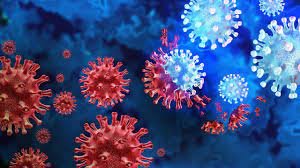The COVID-19 pandemic brought unprecedented challenges to the world, resulting in thousands of fatalities and disrupting societies worldwide. Scientists raced against time to develop a vaccine to combat the rapidly spreading virus that emerged in 2019. While a semblance of normalcy has returned after three years, the recent statement by the World Health Organization (WHO) chief has reignited concerns about the possibility of an even deadlier future pandemic. In response, there has been renewed interest in the WHO’s list of “priority diseases.”
The list includes diseases that have the potential to cause the next severe global epidemic. While some diseases on the list are familiar, such as Ebola, SARS, and Zika, the final entry, referred to as “Disease X,” has garnered attention and raised concerns. According to the WHO’s website, Disease X represents the recognition that a serious international epidemic could be triggered by a pathogen that is currently unknown to cause human disease. It could be a new agent, such as a virus, bacterium, or fungus, for which there are no known treatments.
The WHO introduced the term Disease X in 2018, and just a year later, the COVID-19 pandemic began its rapid global spread. This has prompted experts to seriously consider the potential for a Disease X event shortly. Recent occurrences, such as the H5N1 bird flu cases in Cambodia, serve as reminders of the constant threat.
The discussions around Disease X have led many experts to speculate that the next deadly pandemic could be zoonotic, similar to Ebola and COVID-19, where the disease jumps from animals to humans. Others suggest that it could also arise as a result of human engineering.
The possibility of an engineered pandemic pathogen cannot be ignored either, as highlighted by authors of a 2021 article in the journal Infection Control & Hospital Epidemiology. They emphasize the need to consider the potential for human-made pathogens to cause widespread outbreaks.
In light of these concerns, health experts are calling for increased surveillance and the allocation of additional funds to develop countermeasures. They emphasize the importance of monitoring and early detection of potential disease outbreaks to mitigate their impact and prevent future pandemics.
The world remains acutely aware of the devastating consequences of the COVID-19 pandemic and the need to be prepared for future health crises. The ongoing efforts of scientists, public health organizations, and governments are focused on learning from the lessons of the past and taking proactive measures to prevent and effectively respond to the next global health threat.
